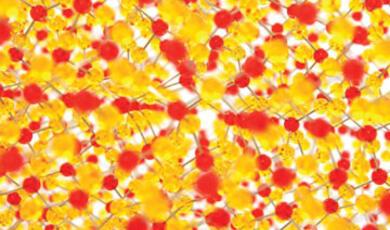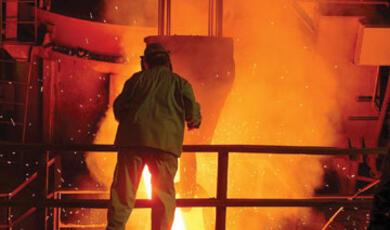Earth – Our Planetary Life Support System
Share
- Details
- Text
- Audio
- Downloads
- Extra Reading
Planet Earth is an intricate and interconnected system, with some fundamental rules that we usually ignore. But we are part of our planet, not separate to it or just perched on top of it. This lecture will consider the two primary rules of Earth: that energy continually flows through the system (in from the Sun and then out again to space) and that matter/atoms must be continually recycled and use these to build up an outsider’s view of our planet.
Download Text
Earth: Our Planetary Life Support System
Dr Helen Czerski
11th September 2025
It’s incorrect to say that we live “on” Earth. We are a living part of it, an increasingly influential component of this huge interconnected engine. But our planet was functioning effectively by its own rules long before we came along, and ultimately we have to learn and play by those rules too. This series of six lectures in 2025/26 will consider the major systems that make up Earth – atmosphere, ocean, biology, rocks/soil and the ice – and investigate their nature and how they operate. How have we explored them, what do we know about them, and what’s the big picture we should have in mind as we design the future of our civilization? In particular, we will consider the physics of these systems, because this reveals some fundamental principles that cannot be broken. This first lecture will introduce the big picture – an external perspective on our planet - and set the scene for the following five.
What is Earth?
Earth is a complex system, and it is possible to look at it from many different perspectives. From the outside, we can view it in many wavelengths (colours), each revealing and hiding different features. Looking at the same region on different time scales and size scales can also highlight very different phenomena. Our direct human perspective is limited, but science can help us visualize how the planetary engine turns at time and size scales beyond the reach of our own senses. Physics is about the movement and interaction of matter and energy, and so we start by zooming out and looking at how those two components flow through and around our planet.
What powers Earth?
Only a tiny fraction of the energy that the Sun radiates away into space intercepts Earth, but that tiny fraction is still substantial from our point of view: 173 terawatts (1.73 x 1014 J/s). This is the energy that runs almost all of the planetary engine that we see, since the contribution from geothermal sources inside the Earth is miniscule by comparison (although still enough drive plate tectonics). We are well aware of the importance of the Sun’s energy as an input, because much of it is in the visible wavelengths that we can see. However, our senses make it much harder for us to appreciate the output – the energy that flows away into space. An output that balances the input over long time periods must exist, otherwise energy would continuously accumulate and the planet would heat up very quickly. This output is mostly in the form of infrared light, and it does indeed approximately balance the input. This shows us our first planetary rule: energy continuously flows through Earth, arriving from space and trickling through the planetary engine before it’s finally lost to the universe. We don't ever “own” energy. We only ever borrow it from this gigantic cascade.
But physics has more to say about how this energy flows through our planet. The cascade must obey the laws of thermodynamics, and that means that for every transition the universe extracts an entropy tax. Entropy can be seen as a measure of disorder, and the laws of physics state that it must always increase overall. So as energy flows from light radiation (sunlight) to heat (of the land and ocean), then on to kinetic energy (as the atmosphere is driven by differential heating) and so on, the amount of useful energy available for each step decreases dramatically. This is why the energy added continuously to the ocean circulation is only a fraction of that going into the atmospheric circulation, which in turn is only a fraction of that arriving from the Sun. The rest of the energy flow ends up as low-level heat – still energy, but not useful for getting anything done. This leads to a critical point about how Earth is powered: all energy is equal, but some is much more useful than the rest. The energy that arrives on Earth is in a low entropy state, but the energy that leaves Earth is high entropy (see Figure 1). The amount of the input and output is the same, but the quality is different. Earth is exporting entropy to the universe, and it is this entropy export that effectively “pays” for all the wonderfully ordered structure (mountains, trees, us) that we have on Earth.
Figure 1. Radiative exchange of the Earth system, showing how entropy is exported to the universe via the different composition of incoming and outgoing light. From Ref 1. p122. SEE DOWNLOADABLE TEXT
What is Earth made of?
Matter is also conserved, but it works very differently. Earth is a “closed system” for atoms, meaning that they don’t arrive and don’t leave. What we’ve got now is what we’ve got forever. There are very tiny inputs (meteorites) and outputs (a very slow leakage of gases from the top of the atmosphere), but these are mostly too small to make much difference on timescales of thousands of years. This leads us to the second fundamental law of our planet: the atoms go round and round. Recycling, either on short or long timescales, is the only option. Our civilization has tended to forget that although recycling is essential, it isn’t automatic. Australia found this to its cost, when western colonizers arrived with cattle. The cattle survived well, but the native recyclers were not adapted to deal with the vast amount of dung they produced. Australia spent decades working on the introduction of dung beetles that would not interfere with local ecosystems but that could process the dung. But as the recycling has progressed, the matter on Earth has been sorted and shaped into a very complex engine. The next step is to understand what’s happening inside that engine.
Conclusion
The laws of physics present us with some fundamental limitations on what can happen on Earth. These shape everything inside our planetary system, but they still allow for a hugely rich and complex environment. The following lectures will examine the workings of each of Earth’s component parts, along with how they interact with each other.
References and additional reading
- Thermodynamic Foundations of the Earth System, by Axel Kleidon. Cambridge University Press, 2016
- Behold the Bubbly Ocean, Helen Czerski 2017 Phys. World 30 (11) 34.
- Blue Machine, Helen Czerski, Transworld, 2023.
- Lovelock, James E., and C. E. Giffin. "Planetary atmospheres: compositional and other changes associated with the presence of life." Advances in the Astronautical Sciences 25 (1969): 179-193.
- Doube, Bernard M. "Ecosystem services provided by dung beetles in Australia." Basic and Applied Ecology 26 (2018): 35-49.
© Professor Helen Czerski 2025/6
- Thermodynamic Foundations of the Earth System, by Axel Kleidon. Cambridge University Press, 2016
- Behold the Bubbly Ocean, Helen Czerski 2017 Phys. World 30 (11) 34.
- Blue Machine, Helen Czerski, Transworld, 2023.
- Lovelock, James E., and C. E. Giffin. "Planetary atmospheres: compositional and other changes associated with the presence of life." Advances in the Astronautical Sciences 25 (1969): 179-193.
- Doube, Bernard M. "Ecosystem services provided by dung beetles in Australia." Basic and Applied Ecology 26 (2018): 35-49.
This event was on Thu, 11 Sep 2025
Support Gresham
Gresham College has offered an outstanding education to the public free of charge for over 400 years. Today, Gresham College plays an important role in fostering a love of learning and a greater understanding of ourselves and the world around us. Your donation will help to widen our reach and to broaden our audience, allowing more people to benefit from a high-quality education from some of the brightest minds.


 Login
Login







